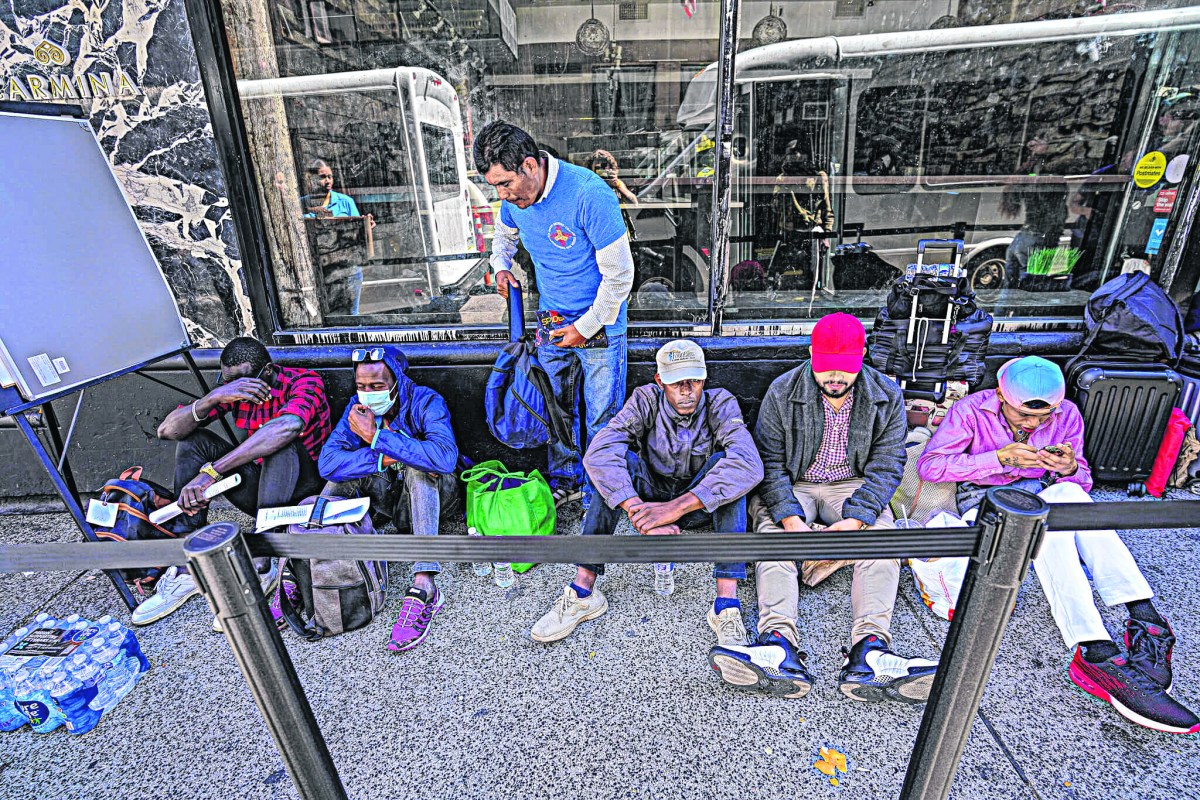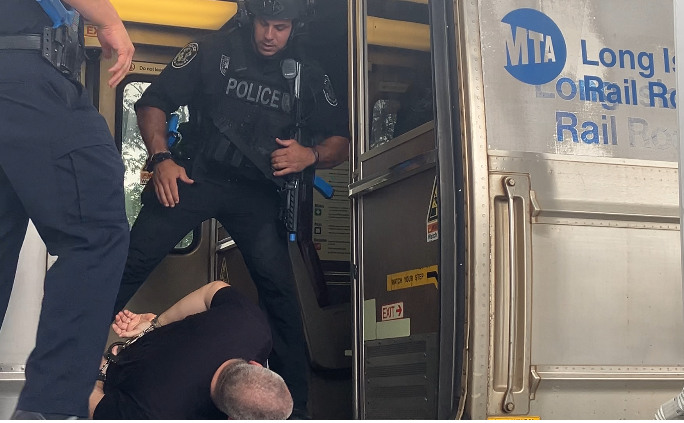Though New York City has been getting most of the spotlight—and the heat—in its efforts to provide shelter and stem the flow of immigrants from the nation’s southern border, Long Island is not untouched by the nearby controversy.
Suffolk county officials have fiercely resisted the idea of providing permanent housing on Long Island to immigrants incoming from New York City. The Town of Riverhead Supervisor Yvette Aguiar announced a state of emergency last spring, to block hotels, motels, and other housing facilities from accepting immigrants or asylum seekers, and the Suffolk County Legislature authorized hiring an attorney to explorer blocking immigrants from being placed in the county.
According to a June study from the Immigrant Research Initiative, there are 550,000 immigrants living on Long Island, “people born in another country . . . people who are undocumented, have green cards, or are naturalized citizens; adults, and children; refugees, asylum seekers, agricultural workers, people with high-skill visas, and more” or 19% of the Island’s population.
The study, an analysis of the most recent census data, says that immigrants account for 21% of the Island’s resident economic output and 23% of the working -age population — ages 16 to 64. The study also pointed out that, even though immigrants are disproportionately more likely than U.S.-born workers to be in low-wage jobs, 60% of immigrants who have full-time jobs — documented and undocumented — earn middle or upper wages.
“Immigrants are a vital part of the social, economic, and cultural life of all communities in Nassau and Suffolk counties,” the study authors wrote.
The local debate reflects what is happening in New York City. Over the last year, the city has received more than 100,000 immigrants coming from the southern border of the U.S. Mayor Eric Adams, who said the crisis “will destroy New York City,” looked to the neighboring suburbs as a potential solution.
Valeria Paz Reyes, manager of organizing and strategy at The New York Immigration Coalition (NYIC), said that immigrants have always existed in New York, but right now we are facing a “shelter rights crisis,” caused by Adams’ failure to address the situation.
A policy and advocacy organization based in New York City, NYIC wants to ensure that the city mayor is doing a proper administration of the housing crisis for newly displaced immigrants to make sure that this issue doesn’t transfer to places out of the city such as Long Island. The coalition organizes local and city campaigns promoting immigrant rights, assists with rallies, protects, and press conferences, and works to guarantee that other immigrant rights organizations receive enough resources.
“We just make sure that we are creating the resources so smaller organizations can provide those services directly to immigrant communities,” she said.
With the pressure to find permanent immigrant housing increasing, several LI organizations took action to ensure that the immigrants’ rights are being respected.
Hofstra University’s Maurice A. Deane School of Law offers a deportation defense clinic in which students represent clients who are most at risk of deportation as well as reopen cases, help victims of trafficking, those who are seeking relief and those who were falsely accused of gang affiliation.
Director Alexander Holtzman said the clinic challenges policies that harm immigrant communities on Long Island and in New York through client representation, advocacy and collaboration with other local legal services providers such as Central American Refugee Center (CARACEN), Make the Road New York and others. In addition, the clinic addresses cases that are examples of problems existing in the immigration system. For example, Holtzman said, in some cases clients have changed their address with U.S. Immigration and Customs Enforcement (ICE), but wasn’t reflected on their court documents, resulting in deportation.
“We also had a lawsuit against Nassau county police, where we were challenging their unlawful practice of arresting or rearresting noncitizens pursuant to ICE detainers,” Holtzman said.
Holtzman said that he hopes immigrants on Long Island aren’t forgotten. “They need quality representation, they need advocates, and assistance and connections to services,” said Holtzman.
Another clinic that supports immigrants is the Long Island Immigration Clinic, a free service largely driven by volunteers. The Brentwood clinic is a sponsored ministry of the Sisters of St. Joseph, a group of sisters who wanted to assist immigrants who didn’t have the financial condition, nor the knowledge to file asylum applications. LIIC is a pro se clinic where immigrants represent themselves. Recently, the service received accreditation and recognition from the Department of Justice.
“We’ve trained over 100 volunteers so far,” said LIIC Director Sister Janet Kinney.
Volunteers prepare immigrants and accompany them for court hearing and also listen to their stories. Kinney said that these individuals have experienced serious trauma, adding that the clinic tries to connect them with mental health services.
“They’re coming with no more than the clothes in their bag, some of them fled on foot for several weeks, they’ve witnessed people being killed in front of them or have been threatened with death themselves, so they come with tremendous trauma.”
Kinney said that the clinic is open to anyone; most of the immigrants they support come from Latin America, especially Colombia, Peru, Honduras and Haiti. She added that there are many misconceptions about these immigrants and their legal status. One is that requesting asylum in the U.S. isn’t a simple process.
“They have to give very specific information that shows that they have in fact been prosecuted or are in fear of prosecution, if they have been tortured, and for what reason,” she said.
Kinney said that, for the most part, she hasn’t seen buses of people arriving on Long Island, but that the numbers are increasing. She reinforced that housing is an urgent need and hopes there’s more education on the matter.
“Global migration is a fact of our world, it’s always been with us and we have to get away from talking about people as a crisis,” she said. “People are not the problem; they wouldn’t be coming here if there wasn’t a reason for them to flee their country.”
Rafael Fonseca Cruvinel and Darlene Ferreira are reporters with the SBU Media Group, part of Stony Brook University School of Communication and Journalism Working Newsroom program for students and local media.



































